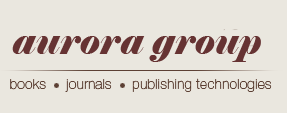Mu K. —
Transformation of images of the Soviet visual arts during post-war period (1945-1960)
// Man and Culture. – 2017. – ¹ 5.
– P. 45 - 56.
DOI: 10.25136/2409-8744.2017.5.23778
URL: https://en.e-notabene.ru/ca/article_23778.html
Read the article
Abstract: The subject of this study is the Soviet art in the context of evolution of the postwar artistic culture (1945-1960). Attention is also focused on the growth of artistic corps, influx of young forces, national and creative diversity of artworks as an achievement at the examined timeframe. The aim goal of the article consists in the need for expanding the existing knowledge on visual arts of the first fifteen postwar years, which is closely associated with the preceding stage – period of the Great Patriotic War. Emphasis is made on how the artists sought to capture the crucial events of the historic battle for freedom, reveal the underlying causes that ensured victory of the USSR, as well as high moral qualities of the Soviet people. The study highlights that the painters who survived the years of grievous suffering during the Great Patriotic War, revealed the new, previously unknown depths of the national character. Artists noticed a hero in the most ordinary Soviet man. From the perspective of the theory of art, the author characterized the relationship between the concepts of "Soviet art", "officially approved art", and "realistic method". The research methodology implies the method of analytical study of sources that clarifies the logic and content of the Soviet painting of the indicated period. The methodological base for the study includes the thematically necessary compilations on the theory and history of art, history of the Soviet culture, and philosophy of art. The author also used a number of electronic publications. The basis of the article lies in the comparative-historical method that helps to determine the specificity of Soviet visual arts of the postwar period (1945-1960), which allows citing that the Soviet scholars trace the transformations in the artistic-imagery structure of Soviet starting back in the prewar period. The scientific novelty consists in revising the evolution of Soviet postwar visual arts from the perspective of direct impression of the artists who have participated in the war, as well as in description of the significance of the work of Russian painters in development and preservation of the Russian art of the XX century. In conclusion, the author underline the fact that the visual arts during the period of 1945-1960 affected the popularization of the themes of Russian painting of the postwar years, which was dedicated to the events of the Great Patriotic War. On the materials of the battlefield memories, Soviet artists have created a vast amount of paintings. In addition, the unofficial art that was represented at the exhibitions and generated government’s criticism entered the cultural arena.




 © 1998 – 2025 Nota Bene. Publishing Technologies. NB-Media Ltd.
© 1998 – 2025 Nota Bene. Publishing Technologies. NB-Media Ltd.




